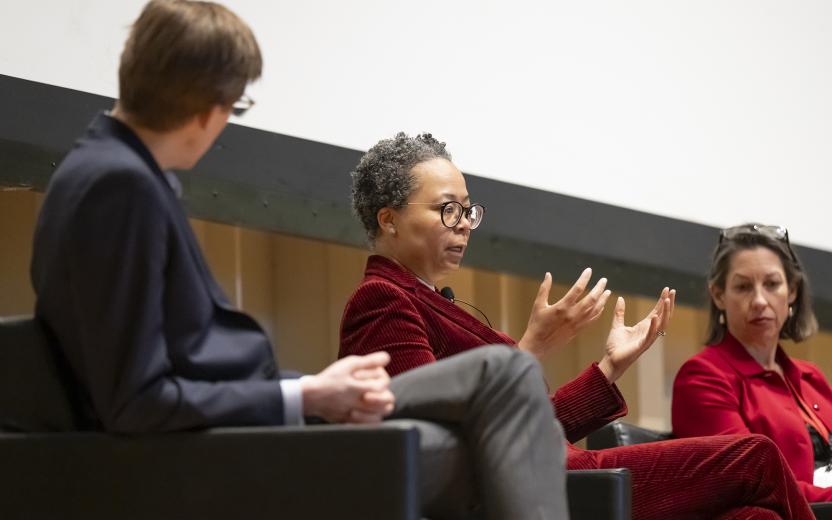
Ballroom dancer. Silent film star. Fashion designer. Animal rights advocate. Irene Castle wore many hats – and donned countless dazzling costumes – as a celebrity during the early twentieth century.
Through a gift from John Foote ’74 and Kristen Rupert ’74, Cornell University Library recently acquired Castle’s collection of professional and personal mementos chronicling her colorful, trendsetting career.
Aficionados of silent film, lovers of local lore, and scholars in filmmaking, fashion, and other disciplines have a lot to explore and learn from the collection, according to Foote, who lectures at the Cornell Institute for Public Affairs and is a distant relative of Castle’s.
“These are not just stale artifacts but windows into the life of an extraordinary woman and fascinating part of Ithaca’s history,” Foote said. “There is something in this archive for everyone.”
Hundreds of photographs, letters, and manuscripts paint a vivid portrait of Castle and her circle, from her ballroom dancing years with first husband Vernon Castle to her time in Ithaca, New York, during her marriage to Robert E. Treman and her time acting for Wharton Studio, a silent film production company that ran from 1914 to 1919. This trove of archival materials had been in the possession of Castle’s granddaughter, Castle McLaughlin, a senior curator at Harvard’s Peabody Museum.
Irene Castle was known for playing strong and stylish female leads such as the title character in the serial “Patria,” a swashbuckling, gun-toting munitions factory heiress who helps thwart a foreign invasion. Off-screen, Castle was also a pioneering entrepreneur who designed many of her own costumes and skillfully cultivated her image to become a household brand, said Denise Green, associate professor in the Department of Fiber Science and Apparel Design in the College of Human Ecology and the director of the Cornell Fashion + Textile Collection, who advocated for the acquisition of Castle’s collection.
“She was a very astute businesswoman,” Green said. “She knew the value of her name as a brand and so she branded all of her fashion innovations.” In 1917, Castle collaborated with Corticelli Silk Mills to develop “Patria”-themed fabrics, and started her own clothing line, Irene Castle Corticelli Fashions, in 1923. She also applied her moniker to everything from her “Castle Bob” haircut in 1913 that sparked a trend in the ’20s to the “Castle Band” of jewelry around her forehead that later resurfaced in hippie fashions of the ’60s, according to Green.
Castle’s archive also helps to illuminate the history of silent film production in the U.S. and, in particular, Wharton Studio, which lost most of its film reels in a fire.
“The tragedy is that early silent film was recorded on nitrate film, which is highly flammable,” Green explained. “And to really understand this history, we have to look at other kinds of archival sources like film stills, advertisements, extant garments, and correspondence.”
Castle’s photo albums and other ephemera are currently featured in a collaborative exhibit between the Wharton Studio Museum and the Cornell Fashion + Textile Collection titled “Serial Style: The Business of Being Irene Castle,”, which is part of the larger exhibit “Breaking Barriers: Women’s Lives and Livelihoods” running through Feb. 26 in the History Center in Tompkins County. The display also includes dresses from the Irene Castle Corticelli Fashions line and a 1920 portrait of Castle by painter and former Cornell professor Olaf Brauner, which was recently acquired by the Herbert F. Johnson Museum of Art.
Tamar Evangelestia-Dougherty, associate university librarian, said that she is thankful for the philanthropic support and the institutional partnerships that have made it possible for Castle’s collection to find a home at Cornell University and be shared with the broader public through the current exhibit at the History Center.
“I’m also very grateful for the fact that faculty like Denise Green and the library can collaborate to find collections that inspire exploration and cultivate intellectual growth and scholarly pursuit,” she said.
This story also appeared in the Cornell Chronicle.





